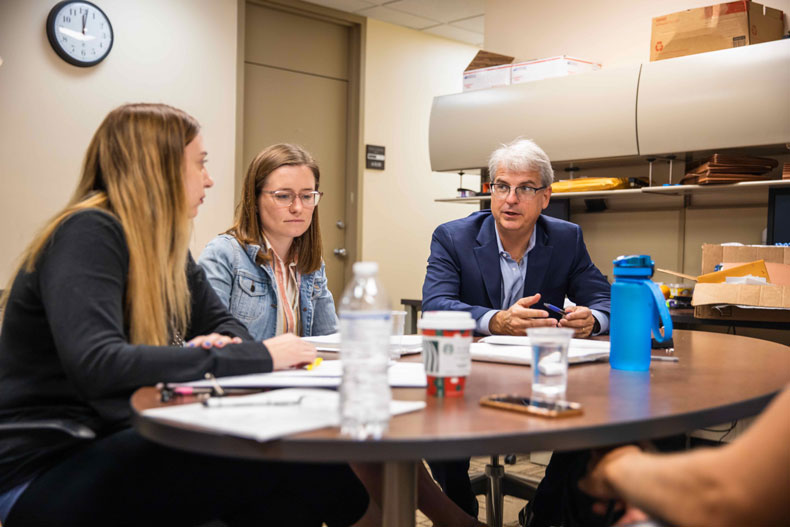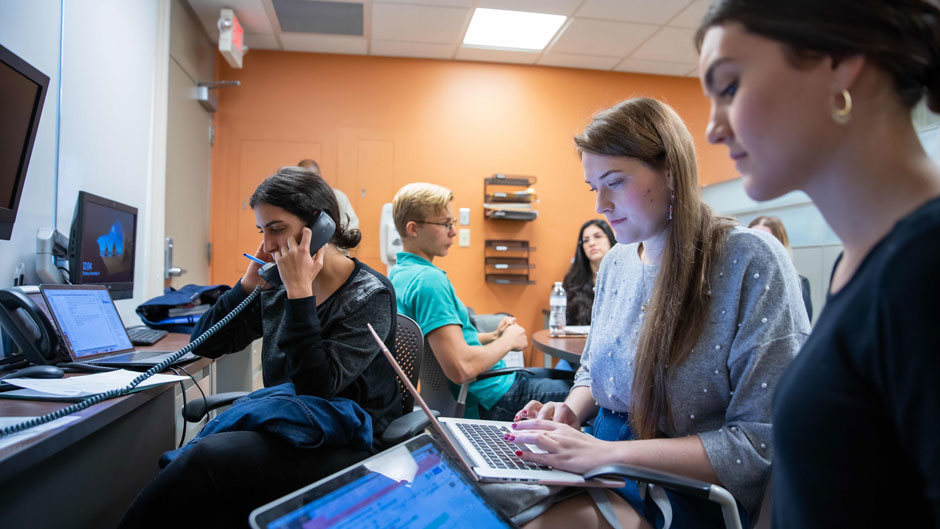Five times longer than ‘‘War and Peace,’’ the mountain of documents—more than 6,000 pages of evidence files, witness depositions, and a trial transcript—arrived just in time for the start of the semester, and now everything was in the hands of a group of eight budding lawyers who had only days to sift through it all.
There was no legal version of CliffNotes to help them. The students would have to read every word of every line, because somewhere in a Florida prison, an inmate’s future was on the line.
At the University of Miami School of Law’s Innocence Clinic, the cases and clients are real, and the stakes often are high: perhaps exoneration for the wrongfully convicted or the continuation of a sentence that can drag on for decades, if not life.
The clinic, which started in 2011, operates as a bona fide law firm. Second- and third-year law students work as the firm’s associates, taking up the mantle for justice and representing Florida inmates who have been convicted of criminal offenses but have compelling claims of innocence.
“They dig into cases. They get their hands dirty,” Innocence Clinic director Craig Trocino, who runs all facets of the clinic, said of how diligently his student interns search for the truth.

Each week, his students open dozens of letters from inmates, reviewing each one in detail to see if a case meets the clinic’s initial criteria for representation. If it does, the students request more information, and the investigation starts.
Their clients have been convicted of serious crimes—rapes, robberies, burglaries, and homicides. But in some cases, there is a flaw—something that was missed, something that was done maliciously at either the initial police investigation phase or at trial—that led to the wrong person being found guilty.
It could be a false confession, prosecutorial misconduct, bad forensic science, a mistaken identification, perjured witness testimony, or a jailhouse snitch with ulterior motives. But whatever the reason for a wrongful conviction, it’s the students’ job to find out and start the legal process to fix it. They do so by interviewing witnesses, reading transcripts, talking to prior counsel, and filing post-conviction motions.
The case of a 19-year-old male convicted in the armed robbery of a Pensacola, Florida, tuxedo store has been particularly frustrating for the students. Two eyewitnesses testified that they saw the man rob the store, but when students reviewed the witnesses’ deposition testimony and compared it to their testimony given at trial, they found glaring inconsistencies—most notably differences in the way they described the defendant’s hairstyle and tattoos.
Another discovery uncovered by students working the case: Two alibi witnesses who placed the defendant somewhere else at the time of the crime were never called to testify. The case is currently winding its way through the appeals process.
While solid DNA evidence would help solve many cases beyond a reasonable doubt, such evidence, said Trocino, exists in only a small percentage of criminal cases, making efforts to clear a client doubly challenging. “And when you’re not dealing with a DNA case, it’s incredibly difficult,” he said, “even if your case is a strong one.” He points to a Jacksonville, Florida, armed robbery case where the defendant’s employer was pacing up and down the courtroom hallway, set to testify that the accused was at work during the time of the crime, but was never called by defense attorneys.
“You’d think that would be an easy one,” Trocino said, “but it’s not. These cases require herculean efforts no matter what, and they take on average five to seven years to get through.”
The 32 cases taken on by the clinic are in various stages of litigation—from investigation to hearings pending before circuit and district courts. In one case, students have filed a federal habeas petition in the U.S. District Court for the Northern District of Florida—an especially complicated filing in which the legality of an inmate’s incarceration is reviewed.
“Our students handle cases by tearing them down from the beginning and looking at all the things that went wrong,” Trocino said. “They learn legal analysis from the start, how to structure a defense, how to deal with lots of paper. They strategize what claims they’re going to argue, then they draft those claims. And then, they go through them again and get it ready to file. If it gets denied, then they go back to square one and strategize for the appeal.”
Trocino said his students often feel like Sisyphus, the legendary Greek king of Corinth condemned eternally to repeatedly roll a heavy stone up a hill only to have it roll down again as soon as it neared the summit.
“It’s tough, challenging, sometimes disheartening, and ultimately frustrating work,” said Trocino, who started his legal career as a Miami-Dade assistant public defender and eventually became an assistant capital collateral regional counsel for the Southern Region of Florida, representing death row inmates.
The clinic is part of the Innocence Network, an affiliation of 67 organizations from all over the world dedicated to providing pro bono legal and investigative services to individuals seeking to prove innocence of crimes for which they have been convicted.
Its work is critical, said Trocino, for it is estimated that the rate of wrongful convictions in the U.S. is between 1 percent and 6 percent. Those figures may seem low, but when they are applied to the U.S. prison population of 2.3 million people, the numbers are actually staggering.
“Virtually every person who has been wrongfully convicted and incarcerated is indigent, and the vast majority of them—70 percent—are people of color,” Trocino said. “It is a population that is most at risk for abuse by the system. The Miami Law Innocence Clinic and the other network members are truly the lawyers of last resort for the wrongfully convicted.”
Students in the Innocence Clinic pair up, litigating at least one case of significant importance while balancing several smaller ones. Many of the cases have been in the post-conviction appeals process longer than the students have been alive. And often, they graduate before a case has been resolved, handing if off to the next team of students who rotate through the clinic.
For Mackenzie Garrity, working at the clinic has been both rewarding and a challenge. “We take a hard look at all of our cases, and it’s challenging to see all the evidence, believe that our clients are innocent, but not know what other new evidence is out there that might convince the court to look at the case again,” she said. “That’s what we’re often up against.”
For Gianna Fina, the year she spent interning at the clinic convinced her even more that she wants to go into criminal law after graduation. “It’s given me a different perspective on the law, showing me what good lawyers should and shouldn’t do,” she said.
“When I applied for this clinic, I just knew that it would provide an experience that was invaluable in so many different ways,” said clinic intern Samantha Enescu, a third-year law student. “It has given me a different lens through which to see criminal defense.”

